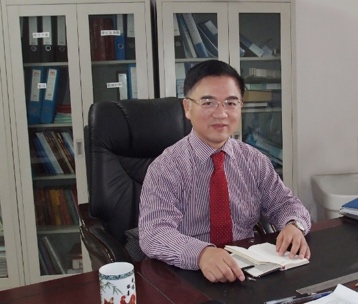Yong Du1,Shuhong Liu1,Yuling Liu1,Changfa Du2,Shiyi Wen1, Taibai Fu2,Qi Huang1, Hong Mao1,Yi Kong1,Jiong Wang1, Sang Tan1, Kai Li1,Lianchang Qiu1,Zhoushun Zheng2,
Bo Li1, Yingbiao Peng3,Cong Zhang4,and Peng Zhou5
1. State Key Laboratory of Powder Metallurgy, Central South University, Changsha 410083
2. School of Mathematics and Statistics, Central South University, Changsha 410083
3. College of Metallurgy and Materials Engineering, Hunan University of Technology, Zhuzhou 412007
4. Hunan Provincial Key Defense Laboratory of High Temperature Wear-Resisting Materials and Preparation Technology, Hunan University of Science and Technology, Xiangtan 411201
5. Collaborative Innovation Center of Steel Technology, University of Science and Technology Beijing, Beijing 100083
Abstract: Material Science is a process of continuously understanding of the evolution of microstructure and establishment of the quantitative relationship between microstructure and performance. Phase diagrams and phase transitions are important foundations for studying the structure, properties and applications of materials. This report mainly introduces our research work on phase diagram, phase transformation, database construction and machine learning and shows several examples of intelligent material design. For material genetic engineering and intelligent design, we developed an efficient and stable program CALTPP (CALculation of Thermophysical Properties) with independent intellectual property rights to calculate thermophysical properties of multicomponent alloys. It can provide thermophysical parameters (including diffusion coefficient, interfacial energy, thermal conductivity, viscosity and molar volume) that vary with composition and temperature. some progress has been made in the calculation program of phase diagram, and a novel calculation method of binary phase diagram has been proposed. The practical applications show that the method can effectively improve the efficiency and stability of phase diagram calculation. Besides, multi-scale phase field models were developed to quantitatively simulate the microstructural evolution of materials with different scales. After nearly 20 years' efforts of the team, we have established our own database of thermodynamic and thermophysical (diffusion coefficient, viscosity, thermal conductivity, volume) databases of light and cemented carbides based on key experiments, phase diagram calculation method and first-principles calculations. For Al-alloys, alloy composition and the alloy microstructure can be optimized and controlled based on phase diagram calculations. As a result, a high-strength high-toughness 6xxx aluminum alloy with better comprehensive performance than other similar alloys was obtained. For cemented carbides, we designed the alloy composition and sintering process based on the thermodynamic and kinetic calculations on the gradient layer microstructure of gradient cemented carbides, and phase-field simulations of the liquid phase migration phenomenon during sintering process, the morphology of WC grains and the microstructure evolution of nano-precipitates in a composite binder phase. On CVD coating, TiSiCN coatings with a certain Si content and grain size were prepared from gaseous mixtures of TiCl4, SiCl4, CH3CN, NH3/N2 and H2 by a low pressure chemical vapor deposition (CVD) process under the guidance of calculations of phase diagrams. they displayed superior cutting performance compared to MT-Ti(C,N) and state-of-the-art thicker MT-Ti(C,N) +Al2O3 multilayer coating.
Keywords: Intelligent design of materials,; Software; Database; Industrial product design
材料智能设计: 软件、数据库及工业产品设计实例
杜 勇1,刘树红1,刘钰玲1,都昌发2,文诗艺1,傅太白2,黄奇1,毛鸿1,孔毅1,汪炯1,唐塞1,李凯1,邱联昌1,郑洲顺2,李波1, 彭英彪3,张聪4,周鹏5
1. 中南大学粉末冶金国家重点实验室,长沙410083
2. 中南大学数学与统计学院,长沙410083
3. 湖南工业大学冶金工程学院, 株洲412007
4. 湖南科技大学高温耐磨材料及制备技术湖南省国防科技重点实验室, 湘潭411201
5. 北京科技大学钢铁共性技术协同创新中心, 北京100083
摘要:材料学研究是对组织结构演变规律的不断理解及对组织结构与性能之间量化关系建立的探求过程。相图和相变是研究材料结构、性能及应用的重要基础。本报告以相图、相变、数据库及机器学习为核心系统介绍我们在软件开发、数据库建立方面的研究成果,并展示材料智能设计的几个实例。(1)面向材料基因工程和智能设计,我们自主开发了高效稳定的多元合金热物性计算通用的程序CALTPP(CALculation of ThermoPhysical Properties),可提供随成分和温度变化的热物性参数(包括扩散系数,界面能,热导率,粘度和摩尔体积)。(2)在相图计算程序上提出了一种新的二元相图计算方法,可有效提高相图计算的效率和稳定性。开发了多尺度的相场模型即可针对不同尺度的材料微结构演变现象进行定量化模拟。(3)经过近二十年的努力,研究团队基于关键实验、相图计算方法和第一性原理计算建立了具有自主知识产权的轻合金和硬质合金热力学、热物性质(扩散系数、粘度、热导率、体积)数据库。针对铝合金,团队基于相图热力学计算优化铝合金成分、调控合金微观结构,由此获得了一种综合性能优于其他同类合金的高强韧6 xxx系铝合金。(4)在硬质合金研究领域,团队基于硬质合金热力学、热物性质计算和相场方法模拟梯度硬质合金梯度层微观组织结构、WC晶粒形貌及复合粘结相中纳米析出相的微结构演变等,从而设计硬质合金成分和烧结工艺,并实现了产业化生产。(5)在CVD耐磨涂层方向,团队基于热力学计算和计算流体力学采用低压化学气相沉积技术以TiCl4、SiCl4、CH3CN、NH3/N2和H2为前驱体制备了一定Si含量和晶粒尺寸的TiSiCN涂层,其硬度和切削性能优于MT-Ti(C,N)和商用MT-Ti(C,N) +Al2O3多层厚涂层,并实现了产业化生产。
关键词:材料智能设计、软件、数据库、工业产品设计

男, 1964年生,湖南华容人。现任粉末冶金国家重点实验室副主任,中德“电化学存储系统集成计算材料工程”联合实验室中方主任,中德“微结构”联合实验室中方主任。1992年获中南大学博士学位。先后在东京工业大学、巴塞罗纳大学、德国克劳思塔尔大学、维也纳大学、威斯康星大学麦迪逊分校从事材料学研究11年。国家杰出青年科学基金获得者;教育部“长江学者”特聘教授;国家自然科学基金委员会创新研究群体项目负责人; 973项目首席科学家。现任国际刊物CALPHAD和J. Phase Equili. Diff. 副主编,国际刊物Int. J. Mater. Res.、Vacuum和J. Mining & Metall. B 编委及国内金属学报等5个刋物的编委;国际相图委员会委员。研究领域包括相图热力学、相变、微结构、结构-性能相关性等;研究材料包括轻合金、硬质合金及耐磨涂层、核材料、高温合金、能源材料等。主持国家自然科学基金委员会创新研究群体、重点项目、973, 863等国家项目42项。获省自然科学一等奖1项,国家自然科学三等奖1项,国际相图委员会最佳论文奖1项,获授权中国国家发明专利2项。先后在国际刊物上发表论文675篇,SCI收录603篇,SCI引用8202次(他引7709次), 在美国合作出版专著一本。2018年9月经3年严格评审获准在Cambridge University Press出版社出版专著一本。2003年回国后指导博士生45名,其中35位已毕业(1位为美国Pittzburg大学副教授、1位为瑞典Uppsala大学副教授、12位为国内高校教授、15位在德国、法国从事博后研究、5位为中美联合培养博士,9位为中德联合培养博士,4位为中奥(地利)联合培养博士)。
Email: yong-du@csu.edu.cn